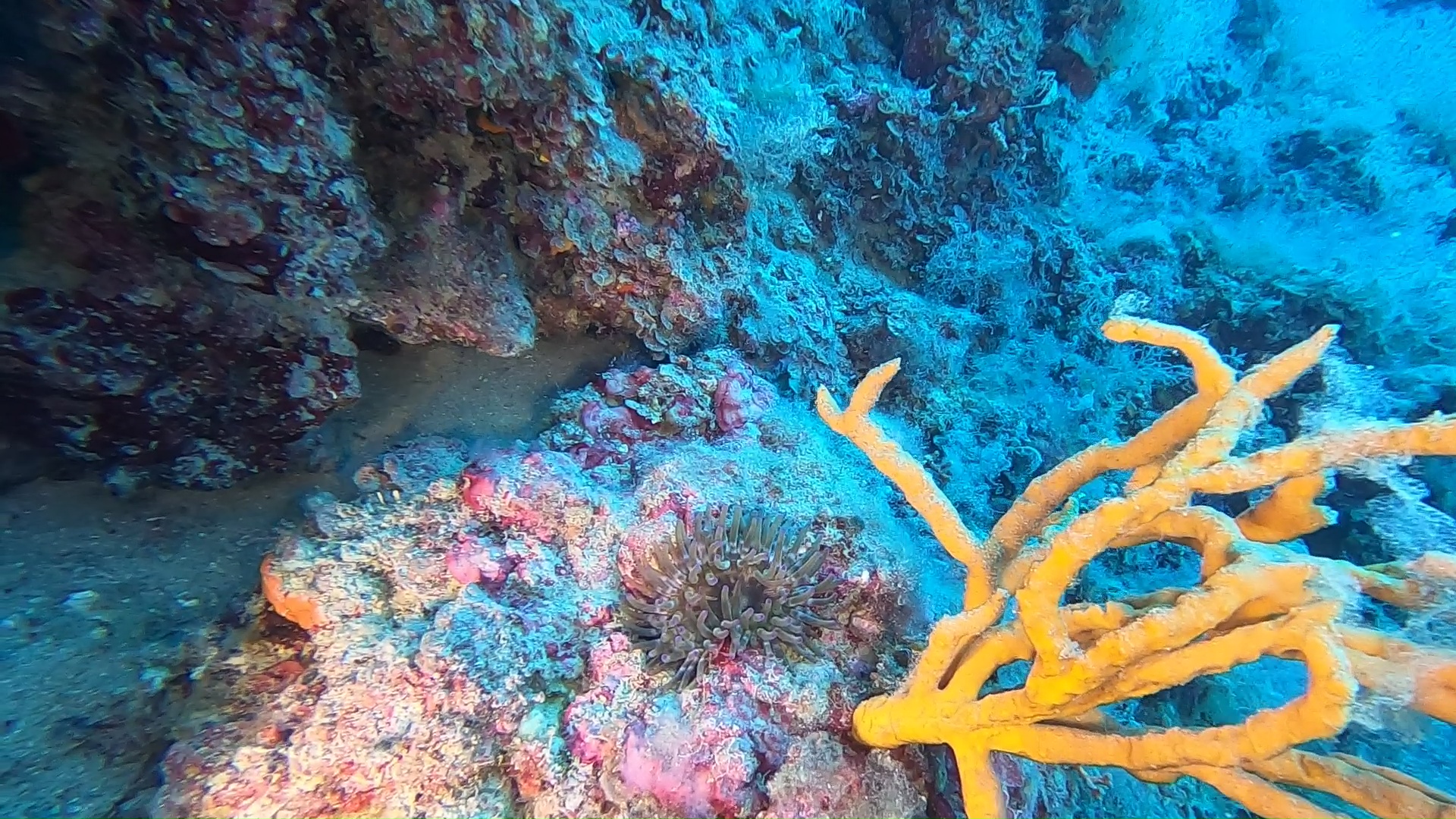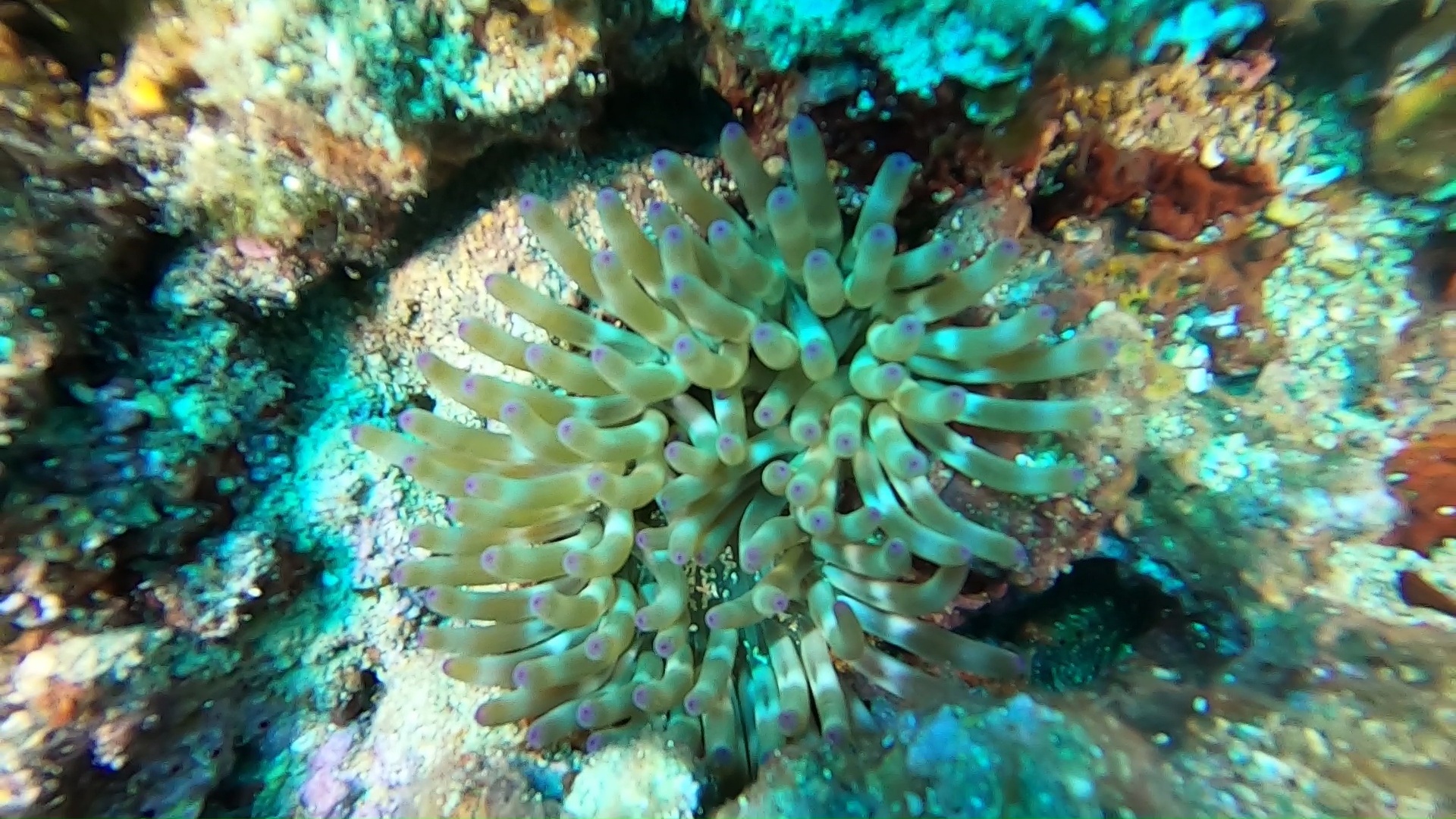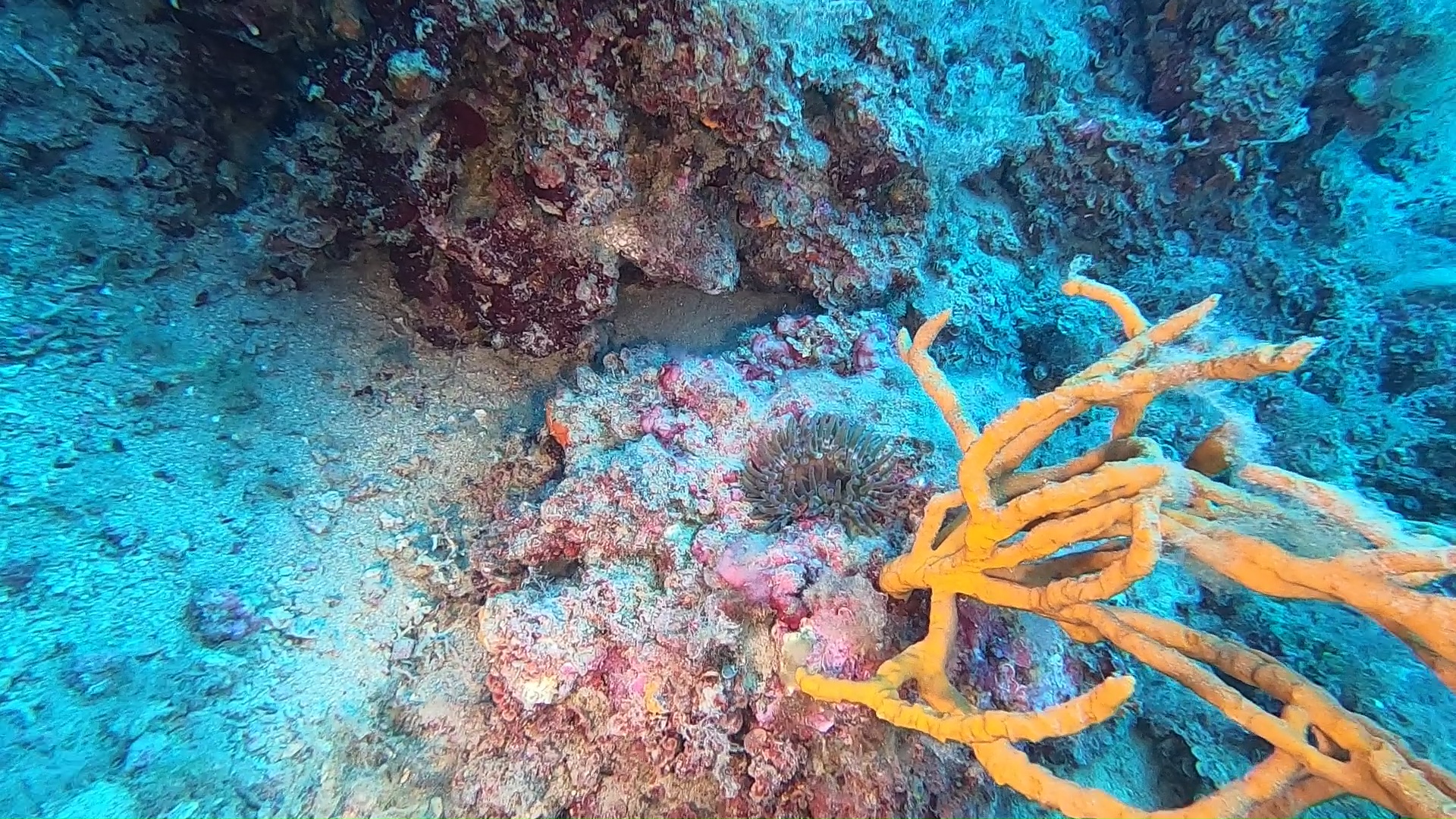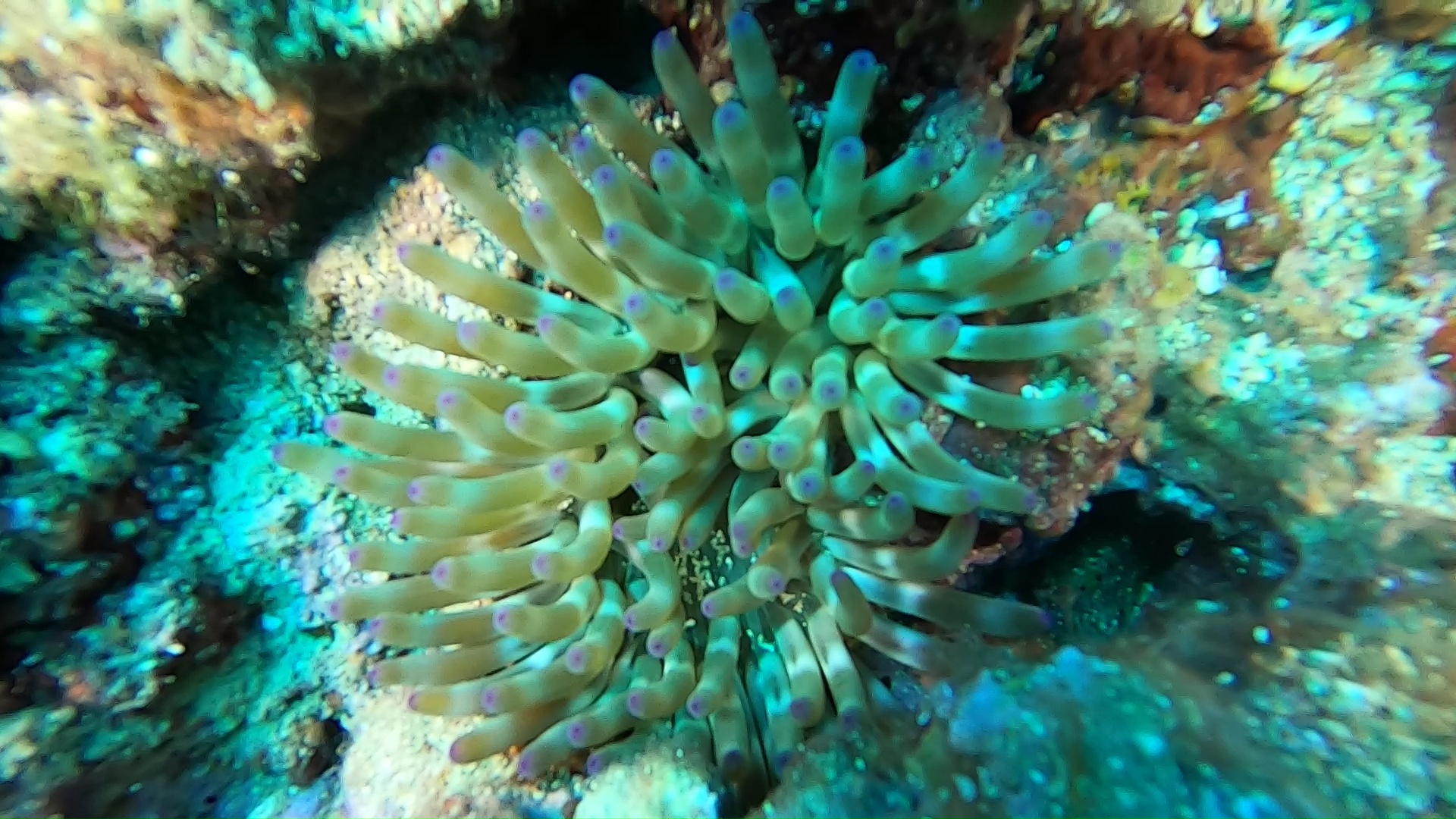Anemone grosso - Cribrinopsis crassa
Fat anemone, Cribrinopsis crassa (Andrès, 1881) is a sea anemone of the Actiniidae family, Cnidaria phylum, endemic to the Mediterranean sea. Cribrinopsis crassa Fat anemone Anemone grosso Actiniaria intotheblue.it

Description Anemone characterized by retractile tentacles with a squat shape, rather short, generally green in color due to the presence of zooxanthella algae but also blue, blue, always with a purple tip.
Biology It feeds mainly at night. Often in symbiosis with the shrimp Periclimenes amethysteus or Periclimenes sagittifer [no source].
Reproduction It reproduces both sexually and asexually.

Distribution and habitat Actinias anre endemic to the Mediterranean Sea, uncommon. Available on rocky bottoms, never on sand, from 0 to 50 meters deep.
Actinias (Actiniaria) are an order of sessile anthozoan Cnidarians of the subclass of Hexacorals, Phylum Cnidaria
Sea anemones (name generally used to designate the Actiniaria order) are among the most diverse and successful members of the Hexacorallia subclass. They occupy benthic marine habitats at all depths and latitudes. Actiniaria includes about 1 200 species of solitary and skeletonless polyps that do not present anatomical synapomorphies.
A well-known representative of this order is Actinia equina (commonly known as sea tomato), which populates the intertidal zone, up to a few meters deep.
They are largely benthic animals; there are also some pelagic species, equipped with a chamber inside the pedal disc that allows them to move vertically in the water.
They feed on invertebrates and small fish which they catch with the tentacles equipped with nematocysts.

Reproduction Reproduction is both sexual by eggs and asexual by cleavage. In unisexual species, which are the most frequent, fertilization occurs with the transport of spermatozoids into the water up to the ovary cavities. The larvae, after birth, are almost perfectly similar to their progenitors; they remain for some time in the mother’s body, and when they have reached the right conditions for independent living, she expels them out of her mouth.
There are also examples of hermaphrodite actinias such as Cerianthus membranaceus; in them the contribution of two individuals is not necessary for the functions of the generation to be fulfilled, and the development and birth of new individuals is carried out as in the other species.

Symbionts Actinias frequently contract mutualism or commensal relationships with other animal organisms such as fish (typical example the clown fish of the subfamily Amphiprioninae), sponges, crustaceans (e.g. porcelain crab) or shrimp (e.g. clean shrimp of the family Palaemonidae) or even with photosymbiotic microorganisms. All these organisms, immune to the stinging bites of the nematocysts, find hospitality and protection among the tentacles of the actinias and, at least in some cases, return the hospitality by cleaning the anemone of organic debris and parasites.
https://it.wikipedia.org/wiki/Cribrinopsis_crassa
https://it.wikipedia.org/wiki/Actiniaria
https://www.intotheblue.it/2020/07/01/anemone-grosso-cribrinopsis-crassa/
